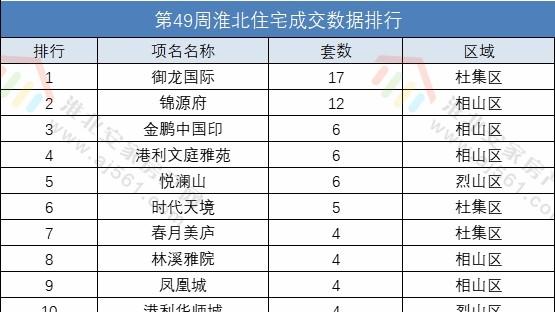еҲ«иЈҒдјӘдҪ“дәІйЈҺйӣ…пјҢиҪ¬зӣҠеӨҡеёҲжҳҜжұқеёҲгҖӮиҝҷзҜҮж–Үз« дё»иҰҒи®Іиҝ°Android IPCжңәеҲ¶вҖ”Binderзҡ„е·ҘдҪңжңәеҲ¶зӣёе…ізҡ„зҹҘиҜҶпјҢеёҢжңӣиғҪдёәдҪ жҸҗдҫӣеё®еҠ©гҖӮ
иҝӣзЁӢе’ҢзәҝзЁӢзҡ„е…ізі»
IPCжңәеҲ¶еҚідёәи·ЁиҝӣзЁӢйҖҡдҝЎпјҢжҳҜinter-Process Communicationзҡ„зј©еҶҷгҖӮжҳҜжҢҮдёӨдёӘиҝӣзЁӢд№Ӣй—ҙиҝӣиЎҢйҖҡдҝЎгҖӮеңЁиҜҙиҝӣзЁӢйҖҡдҝЎд№ӢеүҚпјҢжҲ‘们зҡ„еј„жҳҺзҷҪд»Җд№ҲжҳҜзәҝзЁӢпјҢд»Җд№ҲжҳҜиҝӣзЁӢгҖӮиҝӣзЁӢе’ҢзәҝзЁӢжҳҜдёӨдёӘжҲӘ然дёҚеҗҢзҡ„жҰӮеҝөгҖӮжҢүз…§ж“ҚдҪңзі»з»ҹдёӯзҡ„жҸҸиҝ°пјҢзәҝзЁӢжҳҜCPUи°ғеәҰзҡ„жңҖе°ҸеҚ•дҪҚпјҢеҗҢж—¶зәҝзЁӢд№ҹжҳҜдёҖз§Қжңүйҷҗзҡ„зі»з»ҹиө„жәҗгҖӮиҖҢиҝӣзЁӢдёҖиҲ¬жҳҜжҢҮдёҖдёӘжү§иЎҢеҚ•е…ғпјҢеңЁpcз«ҜжҲ–иҖ…移еҠЁз«ҜдёҠжҳҜжҢҮдёҖдёӘзЁӢеәҸжҲ–иҖ…дёҖдёӘеә”з”ЁгҖӮдёҖдёӘиҝӣзЁӢдёӯеҸҜд»ҘеҢ…еҗ«дёҖдёӘжҲ–иҖ…жҳҜеӨҡдёӘзәҝзЁӢгҖӮжүҖд»Ҙ他们зҡ„е…ізі»еә”иҜҘжҳҜеҢ…еҗ«е’Ңиў«еҢ…еҗ«зҡ„е…ізі»гҖӮ
и·ЁиҝӣзЁӢзҡ„з§Қзұ»
еңЁandroidдёӯи·ЁиҝӣзЁӢйҖҡдҝЎзҡ„ж–№ејҸжңүеҫҲеӨҡз§ҚпјҢBundle,ж–Ү件е…ұдә«пјҢAIDL,Messenger,ContentProvider,Socket,иҝҷдәӣйғҪиғҪе®һзҺ°иҝӣзЁӢй—ҙд№Ӣй—ҙзҡ„йҖҡдҝЎпјҢеҪ“然пјҢиҷҪ然йғҪиғҪеӨҹе®һзҺ°иҝӣзЁӢй—ҙйҖҡдҝЎпјҢдҪҶжҳҜ他们д№Ӣй—ҙзҡ„е®һзҺ°еҺҹзҗҶжҲ–иҖ…иҜҙжҳҜеә•еұӮзҡ„е®һзҺ°ж–№ејҸйғҪжҳҜдёҚдёҖж ·зҡ„гҖӮдёӢйқўпјҢжҲ‘们е°ҶдјҡдёҖдёҖиҜҙжҳҺгҖӮ
жіЁпјҡеҫҲеӨҡеҗҢеӯҰи§үеҫ—еҲӣе»әиҝӣзЁӢе°ұеә”иҜҘеҲӣе»әдёҖдёӘж–°зҡ„еә”з”ЁгҖӮе…¶е®һдёҚжҳҜзҡ„гҖӮеҸӘиҰҒжҲ‘们еңЁAndroidMenifestдёҠеҠ дёҠиҝҷдёҖеҸҘд»Јз Ғе°ұеҸҜд»ҘдәҶandroid:process=вҖң:remoteвҖқе…·дҪ“зҡ„пјҢеҗҢеӯҰ们еҸҜд»ҘиҮӘе·ұзҡ„дәҶи§ЈгҖӮ
еңЁиҜҙIPCд№ӢеүҚпјҢе…ҲиҜҙдёҖдёӢдёҖдәӣеҹәзЎҖжҰӮеҝөпјҢиҝҷж ·еҜ№еҗҺйқўзҡ„еҶ…е®№иғҪеӨҹжӣҙеҘҪзҡ„зҗҶи§ЈгҖӮ
1гҖҒSerializableпјҢParcelableжҺҘеҸЈ
SerializableжҺҘеҸЈжҳҜjavaжҸҗдҫӣзҡ„дёҖдёӘеәҸеҲ—еҢ–зҡ„жҺҘеҸЈпјҢиҝҷжҳҜдёҖдёӘз©әзҡ„жҺҘеҸЈпјҢдёәеҜ№иұЎжҸҗдҫӣж ҮеҮҶзҡ„еәҸеҲ—еҢ–е’ҢеҸҚеәҸеҲ—еҢ–ж“ҚдҪңгҖӮSerializableеәҸеҲ—еҢ–е’ҢеҸҚеәҸеҲ—еҢ–пјҢйғҪжҳҜйҮҮObjectOutputStream
е’ҢObjectInputStreamе°ұеҸҜд»Ҙе®һзҺ°пјҢеҪ“然иҝҷдәӣзі»з»ҹеҹәжң¬е·Із»ҸдёәжҲ‘们е®һзҺ°дәҶгҖӮ
ParcelableжҺҘеҸЈпјҢжҳҜAndroidиҮӘеёҰзҡ„дёҖз§ҚеәҸеҲ—еҢ–ж–№ејҸгҖӮеәҸеҲ—еҢ–е’ҢеҸҚеәҸеҲ—еҢ–йғҪжҳҜйҖҡиҝҮwriteToParcelж–№жі•жқҘе®ҢжҲҗзҡ„гҖӮ
дёӨиҖ…зҡ„еҢәеҲ«пјҡSerializableжҳҜjavaзҡ„еәҸеҲ—еҢ–жҺҘеҸЈдҪҝз”Ёз®ҖеҚ•пјҢдҪҶжҳҜз”ұдәҺеәҸеҲ—еҢ–е’ҢеҸҚеәҸеҲ—еҢ–зҡ„иҝҮзЁӢйңҖиҰҒеӨ§йҮҸзҡ„I/oж“ҚдҪңпјҢжүҖд»ҘжҖ§иғҪиҫғе·®гҖӮParcelableжҺҘеҸЈдҪҝз”Ёиҫғдёәйә»зғҰпјҢдҪҶжҳҜж•ҲзҺҮеҫҲй«ҳпјҢдҪҶжҳҜеӯҳеңЁдёҖдёӘеҫҲеӨ§зҡ„зјәзӮ№пјҢе°ұжҳҜиў«Parcelableе°ҶеҜ№иұЎеәҸеҲ—еҢ–д»ҘеҗҺпјҢиҰҒе°ҶеҜ№иұЎдҝқеӯҳеҲ°зЈҒзӣҳдёӯзҡ„пјҢе°ҶдјҡеҫҲйә»зғҰгҖӮжүҖд»Ҙе»әи®®жҳҜдҪҝз”ЁSerializableгҖӮ
Binder
зӣҙи§ӮжқҘиҜҙпјҢBinderжҳҜAndroidдёӯзҡ„дёҖдёӘзұ»пјҢе®ғе®һзҺ°дәҶIBinderжҺҘеҸЈпјҢд»ҺIPCзҡ„и§’еәҰжқҘиҜҙпјҢBinderжҳҜAndroidдёӯзҡ„дёҖз§Қи·ЁиҝӣзЁӢйҖҡдҝЎзҡ„дёҖз§Қж–№ејҸпјҢеҗҢж—¶иҝҳеҸҜд»ҘзҗҶи§ЈдёәжҳҜдёҖз§ҚиҷҡжӢҹзҡ„зү©зҗҶи®ҫеӨҮпјҢе®ғзҡ„и®ҫеӨҮй©ұеҠЁжҳҜпјҸdev/binder/гҖӮд»ҺFrameworkи§’еәҰжқҘиҜҙпјҢBinderжҳҜServiceManagerзҡ„жЎҘжўҒгҖӮд»Һеә”з”ЁеұӮжқҘиҜҙпјҢBinderжҳҜе®ўжҲ·з«Ҝе’ҢжңҚеҠЎз«ҜиҝӣиЎҢйҖҡдҝЎзҡ„еӘ’д»ӢгҖӮ
еңЁAndroidејҖеҸ‘дёӯпјҢBinderдё»иҰҒз”ЁеңЁServiceдёӯпјҢеҢ…жӢ¬AIDLе’ҢMessengerпјҢз”ұдәҺMessengerзҡ„еә•еұӮе…¶е®һе°ұжҳҜAidlпјҢжүҖд»ҘзҺ°еңЁжҲ‘们д»ҘAIDLжқҘеҲҶжһҗдёҖдёӢbinderзҡ„е·ҘдҪңжңәеҲ¶гҖӮ
еҜ№AIDLиҝҳдёҚжҮӮдҪҝз”Ёзҡ„жңӢеҸӢеҸҜд»ҘзңӢдёҖдёӢжҲ‘д»ҘеүҚеҶҷзҡ„дёҖзҜҮеҚҡе®ўпјҡhttp://www.cnblogs.com/huangjialin/p/7738104.htmlпјҢдёӢйқўе°ұд»ҘиҝҷдёӘдҫӢеӯҗжқҘеҲҶжһҗдёҖдёӢиҝҷдёӘBinderзҡ„е·ҘдҪңжңәеҲ¶гҖӮ
гҖҗAndroid IPCжңәеҲ¶вҖ”Binderзҡ„е·ҘдҪңжңәеҲ¶гҖ‘дёҠд»Јз Ғпјҡ
1 /* 2 3* This file is auto-generated.DO NOT MODIFY. 4 5* Original file: /Users/huangjialin/MyApplication/service/src/main/aidl/aidl/MyAIDLService.aidl 6 7*/ 8 9 package aidl; 10 11 // Declare any non-default types here with import statements 12 13 14 public interface MyAIDLService extends android.os.IInterface { 15 16 17 18/** 19 20* Local-side IPC implementation stub class. 21 22*/ 23 24public static abstract class Stub extends android.os.Binder implements aidl.MyAIDLService { 25 26private static final java.lang.String DESCRIPTOR = "aidl.MyAIDLService"; 27 28 29 30/** 31 32* Construct the stub at attach it to the interface. 33 34*/ 35 36public Stub() { 37 38this.attachInterface(this, DESCRIPTOR); 39 40} 41 42 43 44/** 45 46* Cast an IBinder object into an aidl.MyAIDLService interface, 47 48* generating a proxy if needed. 49 50*/ 51 52public static aidl.MyAIDLService asInterface(android.os.IBinder obj) { 53 54if ((obj == null)) { 55 56return null; 57 58} 59 60android.os.IInterface iin = obj.queryLocalInterface(DESCRIPTOR); 61 62if (((iin != null) & & (iin instanceof aidl.MyAIDLService))) { 63 64return ((aidl.MyAIDLService) iin); 65 66} 67 68return new aidl.MyAIDLService.Stub.Proxy(obj); 69 70} 71 72 73 74@Override 75 76public android.os.IBinder asBinder() { 77 78return this; 79 80} 81 82 83@Override 84 85public boolean onTransact(int code, android.os.Parcel data, android.os.Parcel reply, int flags) throws android.os.RemoteException { 86 87switch (code) { 88 89case INTERFACE_TRANSACTION: { 90 91reply.writeString(DESCRIPTOR); 92 93return true; 94 95} 96 97case TRANSACTION_getString: { 98 99data.enforceInterface(DESCRIPTOR); 100 101java.lang.String _result = this.getString(); 102 103reply.writeNoException(); 104 105reply.writeString(_result); 106 107return true; 108 109} 110 111} 112 113return super.onTransact(code, data, reply, flags); 114 115} 116 117 118 119private static class Proxy implements aidl.MyAIDLService { 120 121private android.os.IBinder mRemote; 122 123 124 125Proxy(android.os.IBinder remote) { 126 127mRemote = remote; 128 129} 130 131 132 133@Override 134 135public android.os.IBinder asBinder() { 136 137return mRemote; 138 139} 140 141 142 143public java.lang.String getInterfaceDescriptor() { 144 145return DESCRIPTOR; 146 147} 148 149 150 151 152@Override 153 154public java.lang.String getString() throws android.os.RemoteException { 155 156android.os.Parcel _data = https://www.songbingjia.com/android/android.os.Parcel.obtain(); 157 158android.os.Parcel _reply = android.os.Parcel.obtain(); 159 160java.lang.String _result; 161 162try { 163 164_data.writeInterfaceToken(DESCRIPTOR); 165 166mRemote.transact(Stub.TRANSACTION_getString, _data, _reply, 0); 167 168_reply.readException(); 169 170_result = _reply.readString(); 171 172} finally { 173 174_reply.recycle(); 175 176_data.recycle(); 177 178} 179 180return _result; 181 182} 183 184} 185 186 187 188static final int TRANSACTION_getString = (android.os.IBinder.FIRST_CALL_TRANSACTION + 0); 189 190} 191 192 193 194public java.lang.String getString() throws android.os.RemoteException; 195 196 } 197 198
дёҠйқўиҝҷж®өд»Јз ҒжҳҜзі»з»ҹз”ҹжҲҗзҡ„пјҢеңЁgenзӣ®еҪ•дёӢеҸҜд»ҘзңӢеҲ°ж №жҚ®MyAIDLService.aidlзі»з»ҹдёәжҲ‘们з”ҹжҲҗдәҶMyAIDLService.javaиҝҷдёӘзұ»гҖӮжҲ‘们е…ҲжқҘдәҶи§ЈдёҖдёӢиҝҷдёӘзұ»дёӯжҜҸдёӘж–№жі•зҡ„еҗ«д№үпјҡ
DESCRIPTORпјҡBinderзҡ„е”ҜдёҖж ҮиҜҶпјҢдёҖиҲ¬з”ЁдәҺеҪ“еүҚBinderзҡ„зұ»еҗҚиЎЁзӨәгҖӮ
asInterface(android.os.IBinder obj)пјҡз”ЁдәҺе°ҶжңҚеҠЎз«Ҝзҡ„BinderеҜ№иұЎиҪ¬жҚўжҲҗе®ўжҲ·з«ҜжүҖйңҖзҡ„AIDLжҺҘеҸЈзұ»еһӢзҡ„еҜ№иұЎпјҢиҝҷз§ҚиҪ¬еҢ–иҝҮзЁӢжҳҜеҢәеҲҶиҝӣзЁӢзҡ„пјҢеҰӮжһңе®ўжҲ·з«Ҝе’ҢжңҚеҠЎз«ҜдҪҚдәҺеҗҢдёҖдёӘиҝӣзЁӢпјҢйӮЈд№ҲиҝҷдёӘж–№жі•иҝ”еӣһзҡ„жҳҜжңҚеҠЎз«Ҝзҡ„stubеҜ№иұЎжң¬иә«пјҢеҗҰеҲҷиҝ”еӣһзҡ„жҳҜзі»з»ҹе°ҒиЈ…еҗҺзҡ„Stub.proxyеҜ№иұЎгҖӮ
asBinder()пјҡз”ЁдәҺиҝ”еӣһеҪ“еүҚBinderеҜ№иұЎгҖӮ
onTransactпјҡиҜҘж–№жі•иҝҗиЎҢеңЁжңҚеҠЎз«Ҝзҡ„BinderзәҝзЁӢжұ дёӯпјҢеҪ“е®ўжҲ·з«ҜеҸ‘иө·и·ЁиҝӣзЁӢйҖҡдҝЎиҜ·жұӮзҡ„ж—¶еҖҷпјҢиҝңзЁӢиҜ·жұӮйҖҡиҝҮзі»з»ҹеә•еұӮе°ҒиЈ…еҗҺдәӨз»ҷиҜҘж–№жі•еӨ„зҗҶгҖӮжіЁж„ҸиҝҷдёӘж–№жі•public boolean onTransact(int code, android.os.Parcel data, android.os.Parcel reply, int flags)пјҢжңҚеҠЎз«ҜйҖҡиҝҮcodeеҸҜд»ҘзЎ®е®ҡе®ўжҲ·з«ҜжүҖиҜ·жұӮзҡ„зӣ®ж Үж–№жі•жҳҜд»Җд№ҲпјҢжҺҘзқҖд»ҺdataдёӯеҸ–еҮәзӣ®ж Үж–№жі•жүҖйңҖзҡ„еҸӮж•°пјҢ然еҗҺжү§иЎҢзӣ®ж Үж–№жі•гҖӮеҪ“зӣ®ж Үж–№жі•жү§иЎҢе®ҢжҜ•еҗҺпјҢе°ұеғҸreplyдёӯеҶҷе…Ҙиҝ”еӣһеҖјгҖӮиҝҷдёӘж–№жі•зҡ„жү§иЎҢиҝҮзЁӢе°ұжҳҜиҝҷж ·зҡ„гҖӮеҰӮжһңиҝҷдёӘж–№жі•иҝ”еӣһfalseпјҢе®ўжҲ·з«ҜжҳҜдјҡиҜ·жұӮеӨұиҙҘзҡ„пјҢжүҖд»ҘжҲ‘们еҸҜд»ҘеңЁиҝҷдёӘж–№жі•дёӯеҒҡдёҖдәӣе®үе…ЁйӘҢиҜҒгҖӮ
public java.lang.String getString() throws android.os.RemoteExceptionпјҡ
иҝҷдёӘж–№жі•иҝҗиЎҢеңЁе®ўжҲ·з«ҜдёӯпјҢеҪ“е®ўжҲ·з«Ҝи°ғз”ЁжӯӨж–№жі•зҡ„ж—¶еҖҷпјҢе®ғзҡ„еҶ…йғЁе®һзҺ°жҳҜиҝҷж ·зҡ„пјҡйҰ–е…ҲеҲӣе»әиҜҘж–№жі•жүҖйңҖиҰҒзҡ„иҫ“е…Ҙзұ»еһӢParcelеҜ№иұЎ_dataпјҢ然еҗҺи°ғз”Ёtransactж–№жі•еҸ‘иө·иҝңзЁӢи°ғз”ЁиҜ·жұӮпјҢеҗҢж—¶еҪ“еүҚзәҝзЁӢжҢӮиө·пјҢ然еҗҺжңҚеҠЎз«Ҝзҡ„OnTransactж–№жі•дјҡиў«и°ғз”ЁпјҢзӣҙеҲ°RPCиҝҮзЁӢиҝ”еӣһеҗҺпјҢеҪ“еүҚзәҝзЁӢ继з»ӯжү§иЎҢпјҢ并д»Һ_replyдёӯиҜ»еҸ–иҝ”еӣһзҡ„ж•°жҚ®гҖӮ
еҰӮеӣҫпјҡBinderзҡ„е·ҘдҪңжңәеҲ¶

ж–Үз« еӣҫзүҮ
д»ҺдёҠйқўеҲҶжһҗпјҢжҲ‘们жҳҺзҷҪдәҶBinderзҡ„е·ҘдҪңжңәеҲ¶дҪҶжҳҜиҰҒжіЁж„ҸдёҖдәӣй—®йўҳпјҡ1гҖҒеҪ“е®ўжҲ·з«ҜеҸ‘иө·иҜ·жұӮж—¶пјҢз”ұдәҺеҪ“еүҚзәҝзЁӢдјҡиў«жҢӮиө·пјҢзӣҙеҲ°жңҚеҠЎз«Ҝиҝ”еӣһж•°жҚ®пјҢеҰӮжһңиҝҷдёӘиҝңзЁӢж–№жі•еҫҲиҖ—ж—¶зҡ„иҜқпјҢйӮЈд№ҲжҳҜдёҚиғҪеӨҹеңЁUIзәҝзЁӢпјҢд№ҹе°ұжҳҜдё»зәҝзЁӢдёӯеҸ‘иө·иҝҷдёӘиҝңзЁӢиҜ·жұӮзҡ„гҖӮ
2гҖҒз”ұдәҺServiceзҡ„Binderж–№жі•иҝҗиЎҢеңЁзәҝзЁӢжұ дёӯпјҢжүҖд»ҘBinderж–№жі•дёҚз®ЎжҳҜиҖ—ж—¶иҝҳжҳҜдёҚиҖ—ж—¶йғҪеә”иҜҘйҮҮз”ЁеҗҢжӯҘзҡ„ж–№ејҸпјҢеӣ дёәе®ғе·Із»ҸиҝҗиЎҢеңЁдёҖдёӘзәҝзЁӢдёӯдәҶгҖӮ
жҺЁиҚҗйҳ…иҜ»
- ExpoеӨ§дҪңжҲҳ--expoдёӯзҡ„App Icon,expoдёӯзҡ„Assets,expoдёӯзҡ„ErrorHandlingй”ҷиҜҜеӨ„зҗҶ
- AndroidйқўиҜ•ж”¶йӣҶеҪ• еҜ№иҜқжЎҶдҝЎжҒҜжҸҗзӨәе’ҢиҸңеҚ•
- Flask дёҠдёӢж–Үз®ЎзҗҶ-- (session,request,current_appзҡ„дј йҖ’)
- е®үеҚ“-жҙ»еҠЁзҡ„з”ҹе‘Ҫе‘Ёжңҹ
- mappersпјҲе°Ҷsqlжҳ е°„жіЁеҶҢеҲ°е…ЁеұҖй…ҚзҪ®дёӯпјү
- android--------йҳҝйҮҢ Sophix移еҠЁзғӯдҝ®еӨҚ
- е®үеҚ“-йЎ№зӣ®зӣ®еҪ•з»“жһ„
- appiumзӯүеҫ…е…ғзҙ
- Appium Android иҺ·еҸ–еҢ…еҗҚе’Ң Activity зҡ„еҮ з§Қж–№жі• (иҪ¬)











